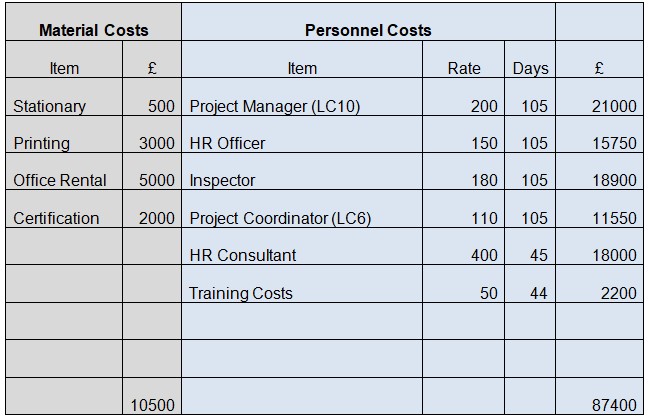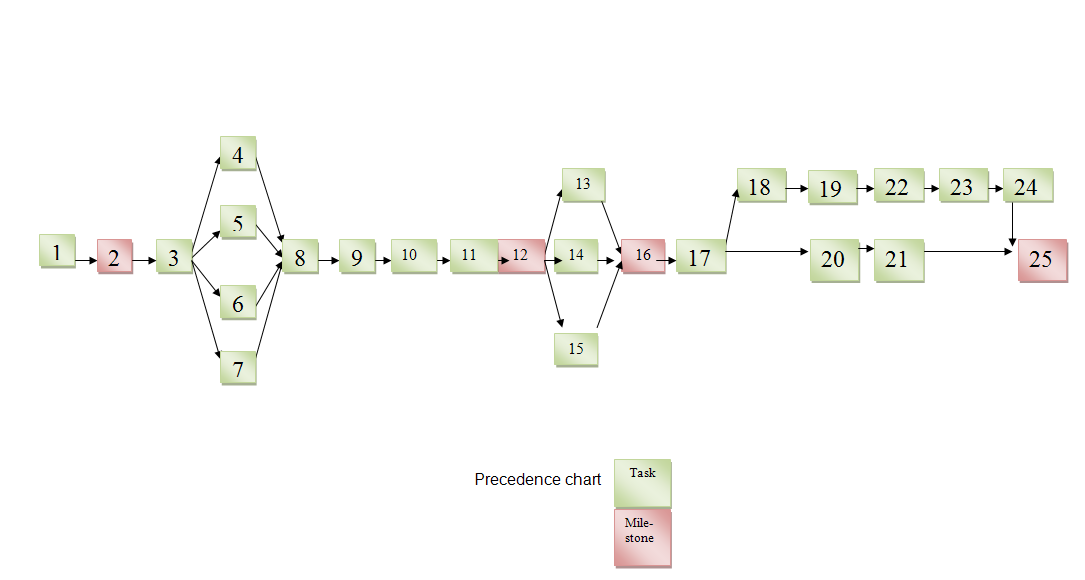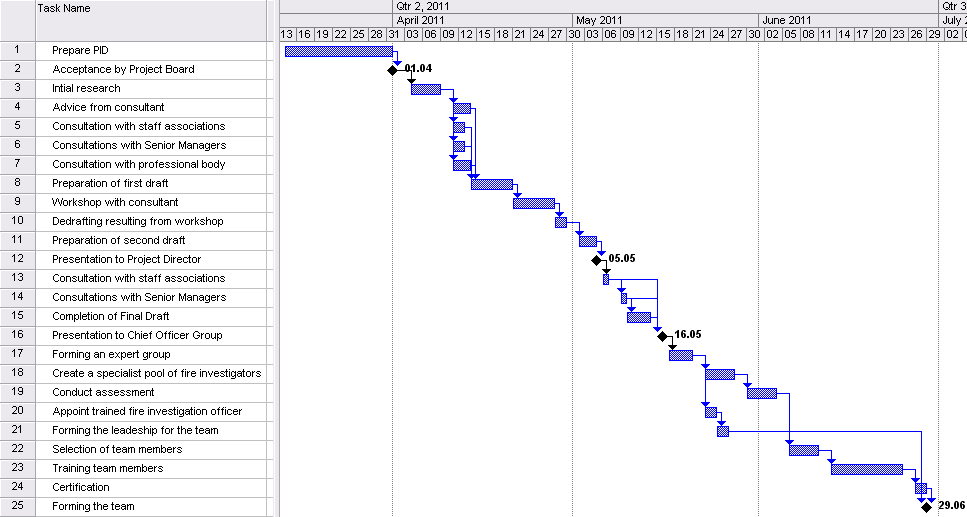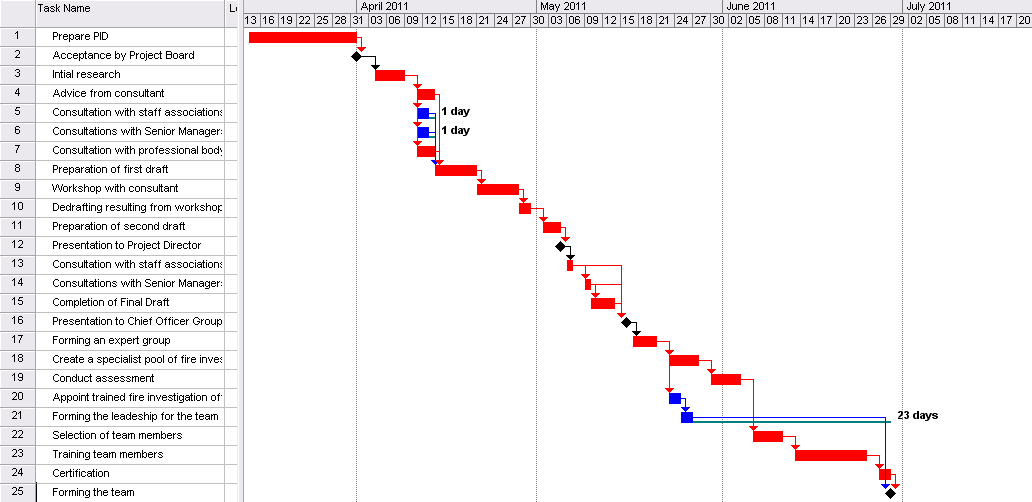The Purpose of the Document
The main aim of this report is to define and outline all the information necessary for the project of creating a dedicated team of fire investigators in a given Fire and Rescue Service department. The document will enable the management and leadership of the Fire and Rescue Service department to acknowledge the appropriateness and the necessity of creating such a team. The document will aim at convincing the Board of a worthwhile business case to agree on the funding of the project.
Background
The prevalence of arson as a cause of fires can be seen through the example Greater Manchester Fire and Rescue Service, in which 77% of all fires are caused by arson. The numbers and the percentages might vary throughout the coutnry7, which nevertheless, indicates that as a cause of fire arson has leading positions. In that regard, the investigation of the causes of fire shall take one of the main objectives of a fire and rescue service. Accordingly, it is stated that “[a]rson costs communities millions of pounds each year” (Greater Manchester Fire and Rescue Service, 2011).
The need for a dedicated team of investigators will allow a customized approach toward shaping the strategy of a Fire and Service Department, in which the findings of local research will be useful for risk management initiatives. Rather than those compiled nationally, In that regard, “[i]nformation from investigations is used to compile research, findings, and statistics which are used to develop safety strategies targeting those identified as the most vulnerable groups in our society” (Greater Manchester Fire and Rescue Service, 2011).
Fire investigation can be related to fire prevention initiatives, where the national framework for Fire and Rescue Services states the importance of consultation during the development of Integrated Risk Management Plans (Department for Communities and Local Government, 2008), in which the findings of fire investigations can be seen as one of the contributions to such consultations. Fire investigation commonly referred to as origin and cause investigation, can be defined as “the analysis of fire-related incidents” (Norfolk County Council, 2011). The formation of a team of fire investigators involves professionals from a variety of fields, including Fire and Rescue Service investigators, Police and Crime Scene Investigators, Forensic Scientists, and Insurers (Norfolk County Council, 2011). Accordingly, a dedicated team of fire investigators will require cooperation with many agencies when determining the cause of the fire (Hampshire Fire and Rescue Service, 2011). It should be noted, additionally, that building a team of fire investigators through providing formal powers to investigate causes of fire is also outlined within the provisions of the Fire and Rescue Services Act, Section 45, which states that “[t]hrough Regional Management Boards, Fire and Rescue Authorities should pool specialist fire investigation capacity to provide an effective regional capability” (SOUTHEAST FIRE AND RESCUE SERVICES, 2006).
The Aim of the Project
The project aims to create a team of qualified investigators who will conduct fire investigations in an effective and efficient way. Efficient use of fire investigation resources and promoting awareness of fire investigation within the department and through inter-agency collaborations. The project will be responsible for scheduling the training, and the certification initiatives that will ensure that a team of invwesti9gation officers will manage the investigation of fire cases across the region.
Objectives
The objectives of the project are to form a team of fire investigators by providing a plan and schedule of activities that will ensure the formation of such a team in a selected city’s department by the end of June 2011. The deliverable in that regard is a team of fire investigators, headed by a fire investigator officer. The measures of success for such a project are expected to be linked to the strategies in reducing arsons and other non-accidental fires. Thus, as criteria for the success of the project, such measurement criteria will be taken as the costs of non-accidental fires, successful cross-agency collaborations, and the overall support across the region (SOUTHEAST FIRE AND RESCUE SERVICES, 2006).
Business Case
Benefits
The benefits of the project include savings that are associated with arson-related fires and costs. Improving the expertise in investigating fire is associated with a dedicated team, where such service will be delivered more efficiently. The efficiency of forming a team can be seen through eliminating the necessity to form a team of investigators each time, where the advantages are clear in terms of “efficiency savings, and developing a consistency of approach, from seeking to agree common protocols across all fire and rescue services” (SOUTH EAST FIRE AND RESCUE SERVICES, 2006). In a long term perspective, the formation of a dedicate team will help in forming regional fire fighting strategies, which will benefit from the valuable information from the results of fire investigation, “about fire behavior in different circumstances and involving different materials” (SOUTH EAST FIRE AND RESCUE SERVICES, 2006). Additionally, the benefits of the project can be represented through the costs that can be saved by decreasing cases of Arson. The costs most cited and which are associated with non-accidental fires in the UK are £1 million per day, as quoted by the association of British insurers (SOUTH EAST FIRE AND RESCUE SERVICES, 2006). In that regard, the costs which are associated with the formation of a dedicated team of fire investigators will be compensated through the decrease of the economic losses associated with the non-accidental fires in a taken region in the UK.
Costs

Material – 10500
Personnel – 87400
Sub Total – 97900
Contingency @ 10% – 9790
Total – 107690
The costs associated with the project are related mostly to personnel. Training costs in that matter are concerned with The Fire Investigation Technician (FIT) Program, in which the main aim is to verify the fundamental’s knowledge of the applicant against core job performance (IAAI, 2011). Among the requirements of the program is a minimum of 44 hours of tested training, the costs of which will add up to the preparation of the team. The high costs contribute to the disadvantages of the project, which are associated with costs which are start up. The time frame for the implementation of the project can b identified through its main milestones, all of which, except the first one, are dependent on the preceding ones. The time scale is generally composed using approximation, maintaining a buffer time, for risk management purposes. Such estimation is based on real estimation, approximate training requirements, and duration of similar projects. The timescale of the project is estimated in the following table:

The business case for the project can be concluded through the prevalence of the non-accidental fires in the UK, the total costs of which surpass any expenditure that will be incurred from training and certification initiatives. The costs of non-accidental fires , which are argued to be much higher than the mentioned £1 million per day, where according to the ODPM Cost of Fire Model, the fire cost to the economy was about £6.6 billion “of which £2.2 billion was attributed to arson” (SOUTH EAST FIRE AND RESCUE SERVICES, 2006). In that regard, the costs which are associated with the formation of a dedicated team of fire investigators will be compensated through the decrease of the economic losses associated with the non-accidental fires in a taken region in the UK. Finally, the benefit of the increased public safety is important in this context, and the potential to reduce the cases for setting the fire deliberately for the purpose of insurance. A collaborative work of a team of fire investigators with insurance agency, will lead to increasing the number of refuted fraudulent insurance cases, which in turn will lead to cases of deliberate fire, which in turn will lead to making such cases less attractive to offenders.
Tasks
The initial project plan for the formation of a team of fire investigators will revolve around training and certifying fire investigators who will form a level two team of fire investigators. The tasks and the mile stones of such plan can be seen through the following table:
Precedence Chart



The control of the projects will be established through the deliverables of each milestone, reports, and meetings conducted at the end of each phase of the project. The meetings will be held more frequently at the stage of the initiation of the project, drafting, and approval. The default setting for each meeting is to be held at the need of each milestone, although it might be expected that with an occurrence of changes, more meetings might be required. Such aspect is discussed in the risk management section of the document.
Staffing
The staffing of the project will be conducted with the help of an appointed project management and an HR consultant. The role and responsibilities ion the project will be assigned in the following order
- Project Manager –coordinating and tracking the progress of the project, providing and reporting information to the sponsors on the state of the project. The project management will. Also hold the meeting and review to control the progress of the project.
- HR Officer – will head the training and developing part of the project along with the HR consultant in the project.
- HR Consultant – the HR consultant will aid in the development of assessment tools for pooling candidates for the team. Accordingly, the consultant will cooperate with eh HR office and the project manager in developing job descriptions, and make sure of their conformance to nation al standards.
- Inspector – the role of inspector is checking the compliance of the project with the schedule.
Part of the staffing responsibilities will be taken with the appointment of the team’s leader –fire investigation officer, who will participate in the training initiatives of the rest of the team.
Risk Management Plan
The risks associated with the implementation of the project can be seen through the following table:
Document Management Plan
All the project’s records and deliverables will be stored, protected, and shared according to the organisation’s standard scheme. The standard scheme of the organisation will cover the following aspect of document management:
- The template used/
- Naming conventions.
- Backup procedure.
- Security level.
- Document and document templates formats.
Aspects other than the aforementioned, such as the software used, document approval, and roles and responsibilities, will be left to the consideration of the project manager.
Conclusion
The present report outlined the process of creating a team of dedicated fire investigators. The report demonstrated the necessity of creating such team a through a business case in which the costs and the benefits of such team were explained. The core of the project is based on the creation of a Project initiation Document (PID), selecting team members and raining the team. The report estimated that the project to take approximately 105 days, with a cost of £107690. The main processes and the milestones of the project were included in the report along with an appropriate risk management plan.
References
Department for Communities and Local Government. 2008. Fire and Rescue Service National Framework 2008–11.
Greater Manchester Fire and Rescue Service. 2011. Arson Costs Communities Millions of Pounds Each Year. Web.
Hampshire Fire and Rescue Service. 2011. Hampshire Fire and Rescue Service Plan 2010 to 2013. Web.
Iaai. 2011. Cfi & Fit Programme [Online]. International Association of Arson Investigators. Web.
Norfolk County Council. 2011. Fire Investigation [Online]. Norfolk County Council. Web.
South East Fire and Rescue Services. 2006. Fire Investigation in the South East Region. Web.